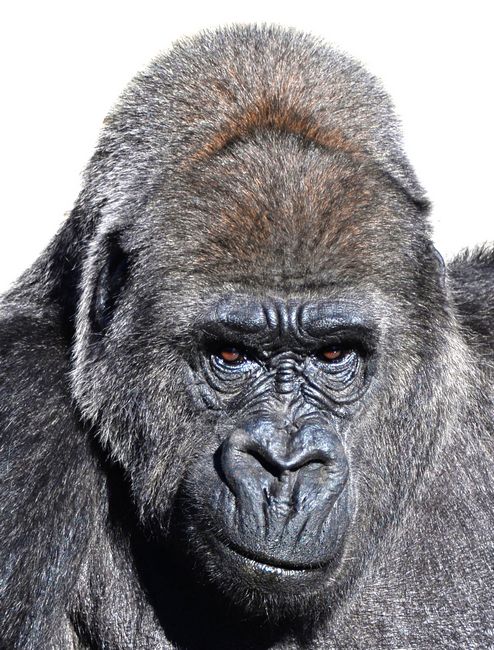Athena Review Image Archive ™
Gorilla gorilla, the Western Lowlands Gorilla

Gorilla gorilla, the Western Lowlands Gorilla (Wikipedia)
The genus Gorilla is divided into two species: the eastern gorilla (Gorilla berengei) and the western gorilla (G. gorilla), with four subspecies, all living in Central Africa. The range of the two species is separated by the Congo River and its tributaries. Speciation may have occured from a single type of gorilla during the Pleistocene Ice Age, when their forest habitats shrank and became isolated from each other. Gorillas, the largest living primates, have DNA very similar to that of both chimpanzees and humans, from 95 to 98% .
The name Gorillai in ancient Greek meant "tribe of hairy women." This is derived from the expidition of Hanno the Navigator, who in ca. 500 BC visited Sierra Leone and encountered "hairy women ... whom our interpreters called Gorillae."
Western lowland gorillas (Gorilla gorilla) are ground-dwelling, mainly herbivorous hominoid apes that live in Central West African countries in dense forests and lowland swamps and marshes as low as sea level.
Gorilla facial structure is prognathic, with the mandible (lower jaw) protruding farther out than the maxilla (upper jaw). There is significant sexual dimorphism. Adult males have a prominent sagittal crest, and both males and females have a bunlike bone projection in the rear of the skull, for muscle attachments.
References
Groves, C. 2002 . A history of gorilla taxonomy. In A.B.Taylor & M.L.. Goldsmith (eds.). Gorilla Biology: A Multidisciplinary Perspective. Cambridge University Press. pp. 15–34.
Hair, P. E. H. 1987. The Periplus of Hanno in the History and Historiography of Black Africa. History in Africa. 14: 43–66.
Montagu, M. F. Ashley 1940. Knowledge of the Ape in Antiquity. Isis. 32 (1): 87–102.
Copyright © 1996-2020 Rust Family Foundation (All Rights Reserved).